Painting wooden doors: how and what to do
Paint a wooden door is not difficult. It is important to just do it right. After all, the coating should stay and be attractive.
The technology for painting wooden doors is basically the same. There are just some kids for individual dyes.
In the video in this article, you can see individual moments of this work and instructions for applying various types of coatings will be given.
The content of the article
Wood painting
Painting wooden doors with your own hands is done according to certain rules.
Schematically, the work is as follows:
| Dye selection | At this stage, you need to choose the material that will be applied. After all, each in its own way reacts to the external environment. Therefore, you need to pay attention to this. If you have high humidity, then you need to choose moisture-resistant dyes. If you constantly live indoors, then paint should be chosen for odorless wooden doors. |
| Plane preparation | Any dye is applied to the prepared surface. After all, this is the key to durability and safety of appearance. Therefore, it is quite important. |
| Painting | If you have several doors, then it is better to purchase a spray gun for this (see We select a spray gun for painting) After all, then everything can be done quickly and efficiently. When painting with a brush, smudges may form, and this should not be allowed. |
How to paint our wooden door
Currently, the choice of various coloring compounds is very large. Therefore, for starters, you need to decide on the purpose of painting: to preserve the natural pattern of the tree, and select it, or hide it by painting with a continuous layer of opaque paint.
Based on personal tastes, you need to pay attention:
- Completely transparent or tinting varnishes, various oil-based impregnations, or stains that betray freshness or new shades
- Various opaque compositions on acrylic, oil (obsolete, inapplicable) polyurethane, perchlorovinyl or alkyd bases, or opaque enamels.
- Wooden interior doors for painting should simply be prepared, and the dye here is suitable for almost any. Here you just need to look at the photo and decide on the pattern that you want to get in the end.
Without talking about taste priorities, and just listen to the advice of professional painters who recommend home craftsmen to purchase:
- Alkyd based dyes, since they have an ideal consistency for brush application, they also have good flowability and hiding power, only slightly inferior to oil-based paints.
- Alkyd paints (paint and varnish production)which are distinguished by excellent water-repellent properties, quick drying, and resistance to temperature extremes.
Note: Of the above options for painting the doors in the bath, the option with alkyd paints is best suited, as they are resistant to various influences.
Coloring with such materials is subject not only to the entrance, but also to the interior doors.
Note! Alkyd based paints must be applied on a dry surface. If you neglect this and the tree will be wet, then air bubbles will form under the paint layer, which will certainly lead to peeling and peeling.
As you have guessed, to qualitatively paint a door made of wood is possible only in several stages, using different coloring compositions:
- To begin with, impregnating compositions with various effects are used, and without, and only then a decorative coating. Compounds should be ideally suited to work in pairs. For example, before applying varnish, you can not use drying oil, but only stain.
- If a decision is made only to refresh the door leaf and the jambs with stain or oil-based impregnation, as a rule, it happens that one layer is not enough. How many layers it is necessary to tell the surface itself, and you will need to paint as many times as needed to obtain the desired result.
Stages of the painting process
Due to the fact that the door is not only just a canvas, but a whole complex of various components, preparing it for painting is a very important stage. Of course, if only the door leaf itself is painted, then the jambs and lintel will be different.
Accordingly, each home master who plans to paint the door needs to do the following:
- Carefully remove the door leaf from the hinges and place on two or three stools, a workbench or goats. If you will use strongly smelling alkyd materials, then it is best to place the workplace outdoors, for example, in the yard or on the balcony.
- If you do not remove the canvas, then you need to wedge it using ordinary wedges, but you need to leave space so that the panel brush access is not limited. The lock also protects against accidental opening during the period of drying and damage to the painted layer.
- Various accessories also need to be dismantled. If this is not possible (for example, fixed loops), it is recommended to wrap with plain paper, and tape, or wrap with foil. The larva of the castle can be sealed with tape.
How to prepare a wooden surface for painting
Preparation is the most important process, which takes place in several stages. In this case, the master is required as much diligence as possible to achieve the desired result.
- First you need to remove the old layers of paint (see How to remove old paint from wood without problems), soil and putty. You can use a grinder, or a hand-held device for this (sandpaper is attached to the timber). For those who have a building hair dryer, this process will become simpler, the surface simply heats up and the heated paint is cleaned off with a spatula. You can also use special formulations to wash off the paint, but it will not be cheap.
- Then it is necessary to perform preliminary grinding, due to which small scratches, dents, and paint residues will be eliminated. Grinding is done with a grinding machine or sandpaper with medium grain. It is recommended that you turn on the vacuum cleaner to collect dust.
- Then puttying is carried out (see How to putty wood: materials, tools, process technology) To do this, you need to choose a special putty if the door will be covered with transparent compounds (varnish, stain). If the door will be painted with opaque paint, then it is not necessary to select a putty, any one will do.
- After standing (drying) putty, using sanding paper or thin section. we grind the surface of the machine, first with medium grain, then fine. Putty drying time is indicated on the packaging.
Attention: Very deep dents can be easily repaired with car putty without fiberglass. The main thing is to apply this advice only for opaque paint.
- We draw the attention of the wizard. Wood darkened from time to time can be bleached with a special mixture that you can make yourself from bleach with chlorine and water in a proportion of 1/3.
- After processing and grinding. Vacuum and wet wipe, then dry and start dyeing
Coloring the door without special effects
Coloring without special effects is a simple coloring, without any frills, effects of photo wallpapers or artificial aging. At this stage, we just learn how to evenly and accurately paint the door without smudges and stains.
So:
- If you need to paint one or two doors, it is very unprofitable to pay for the spray gun. Therefore, for paneled doors, you need to purchase the appropriate brush, and for the rest, a roller.
Attention: Before painting, the brush must be fluffed, while the strips that want to get out need help to do this.
Now we look at the design of the door and determine the scheme of work:
- The panel door is painted in three stages (reception). It is best to use a roller for this, it provides a uniform layer and does not leave hairs. We begin to cover from the end, from the left corner (top) moving in the opposite direction. And so on until the canvas is completely painted, then dried according to the instructions for the paint or varnish used. The second stage is the painting in the longitudinal direction, and the third in the opposite of the first.
- We paint the door of the panel type with a brush, we go through the recess, trying as much as possible to avoid oversaturation with paint. Finish painting with a roller over the entire surface.
Application of stain when painting
When the door is prepared for painting, as we wrote earlier, the door needs to be moistened a little, then the tree will not absorb moisture, and the painting composition, even very liquid, will go down evenly.
- In the horizontal stain we paint along the fibers, then transversely, then again longitudinally.
- Weeds and webs that cannot be removed from the hinges begin to be painted from below, so that splashes and drops do not fall onto clean areas. If after this procedure you plan to cover the door with opaque paint, then the drops will not hurt.
- After the web has been treated with stain, the wood fibers are straightened. After drying, the first layer should be sanded with the finest sanding paper. Then we clean from dust and again we paint with a stain.
Attention. During application, the shade is much darker than during drying, the tone is controlled by the application of new layers.
- Straightening of wood fibers does not occur when using an alcohol stain, and there is no need to grind the door after it, and it dries in half an hour. However, the water-soluble composition is non-toxic, safe and therefore more popular.
What needs to be done to create an imitation of wood
An imitation of a wood pattern can be created on almost any material.
Here's what you need for this:
- We paint the canvas with light beige, light gray or yellow paint and completely dry the surface.
- We brush the entire surface with any liquid soap.
- Apply a layer of dark paint, and then wash off the soap.
For masters who want to paint a door from veneer or upholstered with plywood, another way exists under a tree.
- To do this, you need a special brush sold in hardware stores.
- Then with this brush we apply dye of different shades with movements similar to combing.
- This will create the illusion of wood fibers. Sand after drying.
As can be seen from the foregoing, everything is done very well with one's own hands, the main wooden doors for painting must be carefully prepared and evenly applied with a dye. Do everything carefully and without rushing. The instruction will help you not to miss the details and not to forget anything.

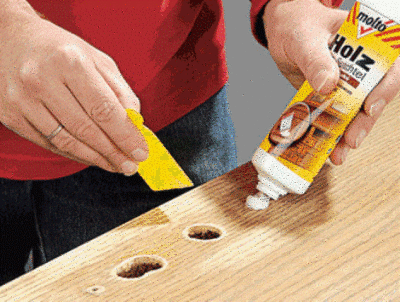
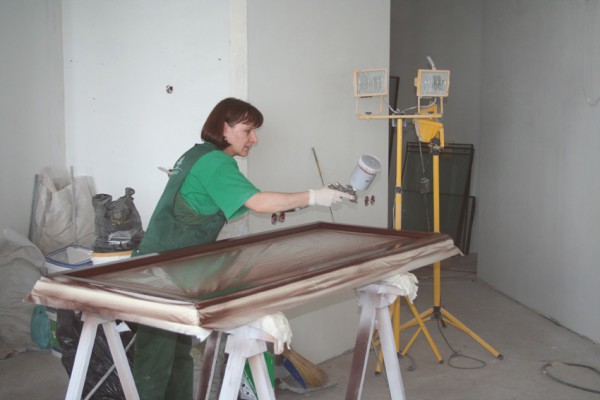
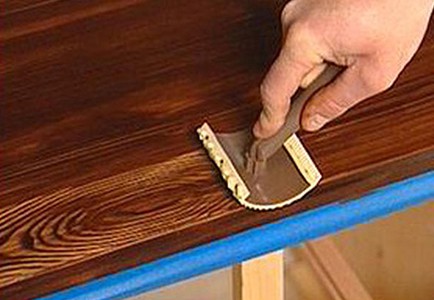

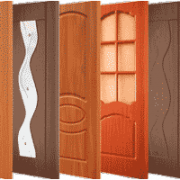
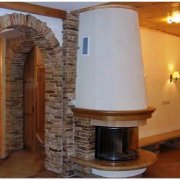

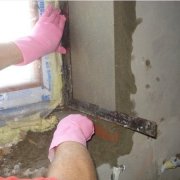
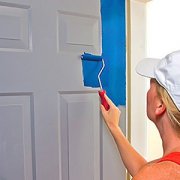
Does anyone else make an imitation of wood with paint? This did not look very good before, but now, next to modern finishing materials, in general brrrr ...